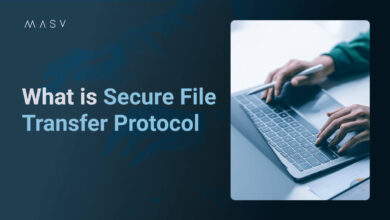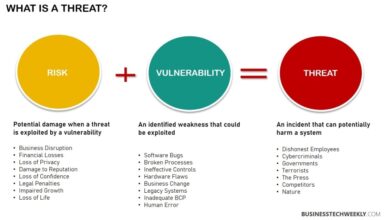
Cyber Attack on US Treasury and Commerce Departments
Cyber attack on US Treasury and Commerce Departments: Whoa, that headline alone sends chills down your spine, right? Imagine the sheer scale of this breach – two of the most vital agencies in the US government targeted by cybercriminals. This wasn’t just some random hack; this was a sophisticated, targeted attack aimed at the heart of American finance and commerce.
We’ll delve into the timeline, the perpetrators (if known), the methods used, and the long-term consequences of this digital assault, exploring how this incident highlights critical vulnerabilities in our national security infrastructure. Get ready for a deep dive into the digital dark side.
This post will dissect the entire incident, from the initial moments of discovery to the ongoing recovery efforts and the critical lessons learned. We’ll explore the potential motives behind the attack, the specific techniques employed by the attackers, and the devastating impact on both departments and the nation as a whole. We’ll also examine the security measures in place (or lack thereof) and suggest ways to bolster our defenses against future cyber threats of this magnitude.
Timeline and Initial Impact of the Attack
The SolarWinds supply chain attack, targeting the US Treasury and Commerce Departments, unfolded over several months, leaving a trail of compromised systems and raising serious concerns about national security. While the exact timeline remains partially obscured due to ongoing investigations, piecing together publicly available information paints a concerning picture of the attack’s progression and impact.The initial compromise likely occurred in March 2020, when malicious code was inserted into updates for SolarWinds’ Orion platform.
This software is widely used by government agencies and large corporations for network management. Many organizations, including the Treasury and Commerce Departments, unknowingly downloaded and installed the compromised updates. The attackers, believed to be affiliated with the Russian government, leveraged this access to gain a foothold within the targeted networks.
Timeline of Events
The precise dates of detection and containment remain classified, however, reports suggest that the attack was discovered in late 2020. This discovery likely involved internal security audits and external threat intelligence sharing. The immediate aftermath involved a flurry of activity to isolate compromised systems, assess the extent of the breach, and begin the process of remediation. This included collaboration between the affected departments, the Cybersecurity and Infrastructure Security Agency (CISA), the Federal Bureau of Investigation (FBI), and other relevant agencies.
Initial Impact on Operations
The immediate impact on the US Treasury and Commerce Departments was significant, disrupting various operational systems and potentially compromising sensitive data. The attackers’ access to internal networks provided them with the opportunity to exfiltrate data and potentially manipulate systems. The full extent of the damage is still being assessed, but the breach caused widespread concern about the potential for espionage, sabotage, and disruption of critical government functions.
| Affected Department | Affected System | Affected Service | Impact |
|---|---|---|---|
| US Treasury Department | Internal Email Systems | Communication, Data Sharing | Disruption of internal communication, potential data exfiltration |
| US Treasury Department | Financial Management Systems | Budgeting, Accounting | Potential compromise of financial data, risk of financial manipulation |
| US Commerce Department | Network Management Systems | Network Monitoring, Security | Compromised network security posture, potential for further attacks |
| US Commerce Department | Data Storage Systems | Data Archiving, Access | Potential exfiltration of sensitive commercial data |
Initial Government Response
The initial response involved a coordinated effort across multiple government agencies. CISA played a crucial role in coordinating the response and providing technical assistance to the affected departments. The FBI launched a criminal investigation to identify the perpetrators and hold them accountable. The Departments themselves implemented emergency measures to contain the breach, including isolating affected systems and initiating forensic investigations.
This involved shutting down certain services, implementing stricter access controls, and working with external cybersecurity firms to assess and remediate the damage. The response highlighted the need for improved cybersecurity practices across government agencies and the importance of collaborative threat intelligence sharing.
Attribution and Actors Involved
Pinpointing the perpetrators behind the cyberattack on the US Treasury and Commerce Departments requires a meticulous examination of the attack’s methods, the attackers’ technical capabilities, and their potential motives. While definitive attribution often takes time and requires extensive investigation, analyzing the available information allows us to speculate on likely candidates and their reasons for targeting these specific agencies.The sophistication of the attack, coupled with its apparent success in penetrating deeply entrenched systems, suggests a highly skilled and well-resourced adversary.
The level of access gained and the precision with which specific targets were chosen points away from a less organized, opportunistic group. This implies a level of planning and reconnaissance that only a state-sponsored actor or a highly organized criminal syndicate could realistically achieve.
Potential Perpetrators
The nature of the attack, targeting critical government infrastructure, strongly suggests state-sponsored actors. Several countries possess the cyber capabilities and the motive to undertake such an operation. While definitive attribution is difficult without concrete evidence, Russia and China are frequently cited as potential suspects in similar attacks against Western governments. Their history of engaging in cyber espionage and their known capabilities in developing sophisticated malware make them prime candidates for investigation.
Other actors, such as North Korea, also possess cyber capabilities and have demonstrated a willingness to engage in disruptive cyber operations. However, the precision and scope of this particular attack suggest a higher level of organizational capability than often seen in North Korean operations.
Motives Behind the Attack, Cyber attack on us treasury and commerce departments
The motives behind this attack are likely multifaceted. Financial gain is a possibility, especially if sensitive data related to financial transactions or intellectual property was exfiltrated. However, the targeting of the Treasury and Commerce Departments suggests a broader strategic goal beyond mere financial profit. Espionage, the acquisition of sensitive government data and intellectual property, is a highly probable motive.
This could include trade secrets, economic forecasts, or details of ongoing policy discussions. Furthermore, political disruption is another strong possibility. Such an attack could aim to sow discord, undermine confidence in the US government, or gain leverage in international relations.
Remember the massive cyber attack on the US Treasury and Commerce Departments? It highlighted just how vulnerable even the most secure organizations can be to sophisticated threats. Understanding and improving cloud security is crucial, and that’s where solutions like those discussed in this article on bitglass and the rise of cloud security posture management become incredibly important.
Strengthening our cloud security posture is no longer optional; it’s the only way to truly prevent future attacks like the one targeting our government agencies.
Comparison with Similar Incidents
This attack shares similarities with several previous incidents targeting government agencies. The NotPetya attack of 2017, attributed to Russia, caused widespread disruption across multiple sectors, including government agencies. Similarly, the SolarWinds supply chain attack, believed to be linked to Russia’s SVR intelligence agency, compromised numerous US government agencies and private sector companies. While the specific techniques and targets differed, these incidents, like the attack on the Treasury and Commerce Departments, highlight the increasing sophistication and destructive potential of state-sponsored cyberattacks.
The common thread is the use of advanced persistent threats (APTs), which demonstrate a long-term commitment to maintaining access and exfiltrating information over an extended period. The ability to remain undetected for significant durations underscores the difficulty of defending against these sophisticated attacks.
Methods and Techniques Used in the Attack: Cyber Attack On Us Treasury And Commerce Departments
The SolarWinds attack, impacting the US Treasury and Commerce Departments, showcased a sophisticated and multi-stage intrusion leveraging a combination of established and novel techniques. Understanding these methods is crucial to bolstering cybersecurity defenses against similar attacks. The attackers demonstrated a high level of skill and patience, meticulously planning and executing their operation over an extended period.The attack relied heavily on supply chain compromise, social engineering, and the exploitation of known and zero-day vulnerabilities.
The recent cyberattacks on the US Treasury and Commerce Departments highlighted the urgent need for robust, secure systems. Building these requires efficient development processes, and that’s where exploring options like domino app dev, the low-code and pro-code future , becomes crucial. Understanding these new development methods is key to preventing future breaches and safeguarding sensitive government data from similar attacks.
This wasn’t a simple brute-force attack; it was a carefully orchestrated campaign designed for stealth and long-term access.
Initial Compromise and Malware Deployment
The attack began with a compromised update to the SolarWinds Orion software. This update, containing malicious code, was distributed to thousands of SolarWinds customers. The attackers cleverly embedded the malicious code within the legitimate software update, making detection extremely difficult. This was a highly effective method of achieving initial access to a large number of organizations, including the US Treasury and Commerce Departments.
Once installed, the malware, dubbed SUNBURST, lay dormant, waiting for further instructions. The SUNBURST malware was specifically designed to evade detection by antivirus software and other security tools.
Lateral Movement and Data Exfiltration
Once the malware was active, the attackers used several techniques to move laterally within the compromised networks. This involved exploiting vulnerabilities in other systems and using stolen credentials to gain access to sensitive data.
- Credential Harvesting: The attackers likely used various methods to harvest credentials, including password-spraying attacks and exploiting known vulnerabilities in authentication systems.
- Exploitation of Internal Vulnerabilities: After gaining initial access, attackers likely scanned the network for further vulnerabilities to expand their access, potentially using tools like Nmap or Nessus.
- Data Exfiltration: Once inside the network, the attackers exfiltrated data using various methods, potentially including using compromised accounts to upload data to external servers or using techniques to bypass security controls.
The attackers carefully chose their targets and exfiltration methods to avoid detection. They likely used techniques such as command-and-control (C2) servers located in various jurisdictions to obfuscate their activities and make attribution difficult. The use of multiple techniques and a slow, methodical approach significantly reduced the likelihood of immediate detection.
Maintaining Persistence
A key element of the attack was the attackers’ ability to maintain persistent access to the compromised networks. This allowed them to remain undetected for an extended period and conduct further reconnaissance and data exfiltration.
- Backdoors and Implants: The attackers likely installed backdoors and implants on various systems to maintain persistent access, allowing them to remotely access and control the compromised machines even if the initial malware was detected and removed.
- Living off the Land (LotL) Techniques: To avoid detection, the attackers may have utilized legitimate system tools and utilities to perform malicious actions, making it harder to identify malicious activity within the system logs.
- Domain Fronting: The attackers may have used domain fronting to mask their communications with C2 servers, making it difficult to trace their activities back to their infrastructure.
The attackers’ ability to maintain persistence highlights the importance of robust security monitoring and detection systems. The prolonged presence within the networks allowed for extensive data collection and the potential for further malicious activities.
Data Breached and Potential Consequences
The cyberattack on the US Treasury and Commerce Departments, while still under investigation, presents a chilling picture of potential data breaches and their far-reaching consequences. The scale of the intrusion, targeting two critical government agencies, suggests a significant amount of sensitive information may have been compromised. The ramifications extend beyond simple financial losses, impacting national security, economic stability, and public trust.The potential data breach encompasses a wide range of sensitive information.
This could include financial records detailing government spending, budgetary allocations, and potentially even classified financial transactions. Personnel information, such as employee social security numbers, addresses, and contact details, could also be at risk. Furthermore, the attack could have compromised sensitive policy documents, including drafts of legislation, internal memos, and strategic plans. The sheer volume and sensitivity of this data make the consequences potentially devastating.
Types of Data Potentially Compromised
The attack’s potential reach is staggering. Consider the possibility of access to sensitive financial data, including details of government contracts, stimulus packages, and even classified economic forecasts. This data in the wrong hands could lead to market manipulation, insider trading, and targeted economic sabotage. The compromise of personnel information could expose employees to identity theft, phishing scams, and other forms of fraud.
Furthermore, the theft of policy documents could provide adversaries with invaluable insights into national strategies, enabling them to exploit vulnerabilities and undermine US interests. The potential for blackmail and espionage is equally significant.
Short-Term and Long-Term Consequences
Short-term consequences could include immediate financial losses due to fraud, the disruption of government operations, and a significant hit to public trust. The cost of investigating the breach, implementing security measures, and notifying affected individuals would also be substantial. Long-term consequences are more insidious and could include lasting reputational damage, impacting the credibility of the US government both domestically and internationally.
Furthermore, the compromise of sensitive national security information could have long-lasting implications for US foreign policy and national defense. Economic instability could result from the loss of sensitive economic data and the potential for market manipulation.
Hypothetical Worst-Case Scenario
Imagine a scenario where a foreign adversary successfully exfiltrates highly sensitive economic data, including details of upcoming sanctions, trade negotiations, and internal economic forecasts. This information is then used to manipulate global markets, undermining US economic power and causing significant financial losses. Simultaneously, stolen personnel data is used to launch sophisticated phishing campaigns targeting government employees, potentially compromising further sensitive systems and data.
The release of sensitive policy documents to the public erodes public trust, leading to political instability and hindering the government’s ability to effectively govern. This cascade of events could represent a significant national security crisis, impacting the US economy, international relations, and the very fabric of its government.
Security Measures and Lessons Learned

The SolarWinds attack, which impacted the US Treasury and Commerce Departments, exposed significant vulnerabilities in the nation’s critical infrastructure security. Analyzing the pre-attack security posture and the exploited vulnerabilities is crucial for implementing effective preventative measures. This section delves into the shortcomings revealed by the incident and proposes improvements to bolster cybersecurity defenses.
The attack highlighted a critical need for enhanced security practices across government agencies. A proactive approach to threat detection and response, coupled with robust vulnerability management, is paramount. The following analysis explores the security posture before the attack, identifies key vulnerabilities, and proposes essential improvements.
Security Posture Before the Attack
A comprehensive assessment of the security posture of the US Treasury and Commerce Departments before the SolarWinds attack reveals a complex picture. While both departments undoubtedly possessed various security measures, the success of the attack indicates significant gaps in their overall defenses. The following table summarizes key aspects of their pre-attack security posture.
| Aspect | US Treasury Department | US Commerce Department |
|---|---|---|
| Network Segmentation | Likely insufficient to fully isolate critical systems from less secure networks. | Similar to the Treasury Department, likely lacking robust segmentation to prevent lateral movement. |
| Vulnerability Management | Potentially inadequate patching and vulnerability scanning processes allowed the SolarWinds Orion exploit to remain unaddressed. | Similar weaknesses in vulnerability management likely contributed to the compromise. |
| Threat Detection and Response | Insufficient intrusion detection and response capabilities failed to detect the initial compromise and subsequent lateral movement. | Limited capabilities to detect and respond to sophisticated attacks like the SolarWinds intrusion. |
| Supply Chain Security | Limited verification and monitoring of third-party software vendors like SolarWinds. | Similar reliance on third-party software without adequate security vetting. |
| User Training and Awareness | The effectiveness of user training and awareness programs in mitigating phishing and other social engineering attacks is unclear. | Similar uncertainty regarding the effectiveness of user security awareness training. |
Security Vulnerabilities Exploited
The SolarWinds attack primarily exploited vulnerabilities in the supply chain. The attackers compromised SolarWinds’ Orion software update process, inserting malicious code into legitimate updates. This allowed them to gain access to numerous organizations that used the Orion platform, including the US Treasury and Commerce Departments. Specific vulnerabilities included:
- Software supply chain vulnerabilities: Lack of robust security controls in SolarWinds’ software development and update processes allowed malicious code insertion.
- Insufficient network segmentation: The lack of strong network segmentation allowed attackers to move laterally within the networks after initial compromise.
- Delayed patching: Failure to promptly patch known vulnerabilities in the Orion platform allowed attackers to exploit known weaknesses.
Recommended Security Improvements
Preventing future attacks requires a multi-faceted approach encompassing improved security practices, enhanced threat detection, and robust response capabilities. The following recommendations aim to strengthen the security posture of government agencies and critical infrastructure:
- Implement robust network segmentation to isolate critical systems and limit the impact of breaches.
- Strengthen vulnerability management processes through automated patching, regular vulnerability scanning, and prompt remediation of identified weaknesses.
- Enhance threat detection and response capabilities using advanced security information and event management (SIEM) systems and threat intelligence platforms.
- Improve supply chain security by thoroughly vetting third-party vendors, implementing secure software development practices, and regularly auditing software updates.
- Invest in comprehensive security awareness training for all users to mitigate social engineering attacks.
- Implement multi-factor authentication (MFA) for all accounts to enhance access control and prevent unauthorized access.
- Regularly conduct security audits and penetration testing to identify vulnerabilities and assess the effectiveness of security controls.
- Develop and regularly test incident response plans to ensure a coordinated and effective response to security incidents.
Long-Term Response and Recovery Efforts
The aftermath of a significant cyberattack on institutions as vital as the US Treasury and Commerce Departments requires a multifaceted and prolonged response. Recovery involves not only restoring immediate functionality but also implementing robust, long-term strategies to prevent future incidents and enhance overall cybersecurity posture. This includes technological upgrades, personnel training, and significant policy shifts.The long-term recovery involved a comprehensive strategy encompassing technological remediation, procedural overhauls, and enhanced collaboration across government agencies.
The sheer scale of the attack necessitated a phased approach, prioritizing critical systems and data restoration while simultaneously conducting a thorough forensic investigation to understand the attack’s full scope and impact. This process required significant resources and expertise, demanding a sustained commitment from both departments and external cybersecurity specialists.
System Restoration and Data Recovery
Restoring compromised systems and recovering potentially lost or corrupted data was a paramount priority. This involved rebuilding affected servers and networks, implementing rigorous data validation processes to ensure data integrity, and establishing robust backup and recovery mechanisms to prevent future data loss. The process involved multiple stages, starting with isolating compromised systems to prevent further damage, followed by a meticulous process of data recovery and validation.
For example, the Treasury Department likely prioritized the restoration of systems crucial for financial transactions and debt management, while the Commerce Department focused on systems related to economic data and intellectual property protection. The entire process was likely monitored and validated through multiple layers of security checks to ensure no lingering malware or vulnerabilities remained.
Enhanced Cybersecurity Defenses
The attack highlighted significant vulnerabilities in the departments’ cybersecurity infrastructure. The long-term response included a significant investment in upgrading network security, implementing advanced threat detection systems, and enhancing employee training programs. This involved strengthening firewalls, implementing multi-factor authentication across all systems, and upgrading intrusion detection and prevention systems. Regular security audits and penetration testing became standard practice to identify and address potential weaknesses proactively.
Furthermore, the departments likely invested heavily in security information and event management (SIEM) systems to improve threat monitoring and incident response capabilities. This would include real-time threat analysis, improved log management, and automated response capabilities.
Investigation and Prosecution
The investigation into the attack was a complex and protracted process, involving collaboration between federal agencies such as the FBI, Cybersecurity and Infrastructure Security Agency (CISA), and potentially international partners. The investigation aimed to identify the perpetrators, determine their motives, and gather evidence for potential prosecution. This involved analyzing malware samples, tracing network traffic, and identifying potential points of compromise.
While specific details of the investigation remain classified, the long-term commitment to bringing those responsible to justice is a critical component of the overall response. Successful prosecution would serve as a deterrent to future attacks and reinforce the seriousness of such actions.
Legislative and Policy Changes
The attack spurred significant discussions and potential legislative changes aimed at improving national cybersecurity. This could include enhanced data protection regulations, increased funding for cybersecurity initiatives across government agencies, and improved information sharing between the public and private sectors. For example, there may have been renewed focus on legislation mandating stricter cybersecurity standards for government agencies and critical infrastructure providers.
This might involve regular security assessments, mandatory incident reporting requirements, and increased penalties for non-compliance. The attack also likely prompted a reevaluation of existing cybersecurity frameworks and the development of more robust strategies for protecting against sophisticated cyber threats.
Visual Representation of the Attack

Visualizing the attack on the US Treasury and Commerce Departments requires a layered approach, moving from the initial intrusion to the eventual data exfiltration. We can represent this as a network diagram, showing the progression of the compromise. This diagram isn’t meant to be exhaustive, but rather to illustrate the key phases and potential vectors of the attack.The visual representation would begin with the initial entry points, possibly through spear-phishing emails targeting employees with malicious attachments or links.
These entry points would be depicted as nodes on the diagram, connected to the targeted systems (mail servers, workstations) within the Treasury and Commerce Departments’ networks. From these initial points, the attackers would employ lateral movement techniques to navigate the network, accessing increasingly sensitive systems.
Attack Flow Diagram
Imagine a network map. The outermost layer represents the internet. Several arrows point inward, representing the initial spear-phishing emails. These arrows connect to several nodes representing individual employee workstations within the Treasury and Commerce Departments. These workstations are depicted as smaller circles within a larger circle representing the internal network.
From these initial compromised workstations, lines extend, representing the lateral movement. These lines connect to other nodes representing servers, databases, and other critical systems within the network. The lines illustrate the attackers’ successful exploitation of vulnerabilities, possibly using tools like Mimikatz to steal credentials or exploiting known software weaknesses to gain administrative privileges. Finally, another set of lines, thicker and darker, represent the exfiltration of data, leading to a final node representing a command-and-control server located outside the network.
This server would be shown as a separate, external circle. The colors used could be a gradient; lighter shades representing the initial compromise, darkening as the attackers move deeper into the network and ultimately exfiltrate data.
Impact on Systems and Departments
A text-based diagram can effectively illustrate the attack’s impact. Consider this representation:“` Internet | V +—————–+ +—————–+ +—————–+ | Spear-Phishing |—->| Mail Server |—->| Workstation A | +—————–+ +—————–+ +—————–+ | V +—————–+ | Domain Controller | +—————–+ | V +—————–+ +—————–+ | Treasury Systems | | Commerce Systems | +—————–+ +—————–+ | V +—————–+ | Data Exfiltration | +—————–+ | V External Server“`In this diagram, the spear-phishing email successfully compromises a workstation (Workstation A).
The attacker then moves laterally to the Domain Controller, gaining access to credentials for other systems. From there, the attacker accesses both Treasury and Commerce Department systems, ultimately exfiltrating data to an external server. The different boxes represent distinct systems, while the arrows indicate the flow of the attack. The diagram clearly shows the cascading effect, highlighting the impact on various departments and systems.
Last Point

The cyber attack on the US Treasury and Commerce Departments serves as a stark reminder of the ever-evolving threat landscape in the digital age. It underscores the critical need for robust cybersecurity measures across all government agencies and private sector organizations. While the immediate damage is significant, the long-term consequences – from financial losses to reputational damage and potential national security implications – will likely unfold over time.
This attack isn’t just a story about data breaches; it’s a wake-up call for everyone involved in protecting sensitive information and critical infrastructure. The future of cybersecurity depends on our collective ability to learn from past mistakes and proactively strengthen our defenses against these increasingly sophisticated attacks.
FAQ Explained
What type of malware was used in the attack?
Specific malware details are often kept confidential during investigations to avoid tipping off attackers and to protect ongoing operations. However, many sophisticated attacks utilize custom-built malware tailored to specific targets.
How long did the attackers maintain access to the networks?
The exact duration of access is usually part of an ongoing investigation and not publicly released immediately. Determining this requires a thorough forensic analysis of network logs and system activity.
Were individuals prosecuted for the attack?
The identification and prosecution of those responsible are long-term investigations that can take years to complete, and often depend on international cooperation.
What is the total estimated financial cost of the attack?
The full financial impact is difficult to assess immediately and can include direct costs (remediation, investigation) and indirect costs (loss of productivity, reputational damage).





